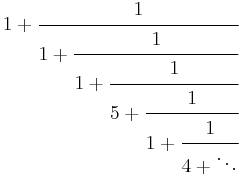Lieb's square ice constant
| Binary | 1.10001010001000110100010111001100… |
| Decimal | 1.539600717839002… |
| Hexadecimal | 1.8A2345CC0442… |
| Continued fraction |  |
Lieb's square ice constant is a mathematical constant used in the field of combinatorics. It was introduced by Elliott H. Lieb in 1967.[1]
Definition
Let L denote the area of an n × n square lattice, where L = n2. Assign a direction to each edge of the lattice. Denote the number of orientations of such that each vertex has two inwardly directed and two outwardly directed edges by f(n).
Some historical and physical background can be found in the article Ice-type model.
References
- ^ Lieb, Elliott (1967). "Residual Entropy of Square Ice". Physical Review 162 (1): 162. doi:10.1103/PhysRev.162.162.
